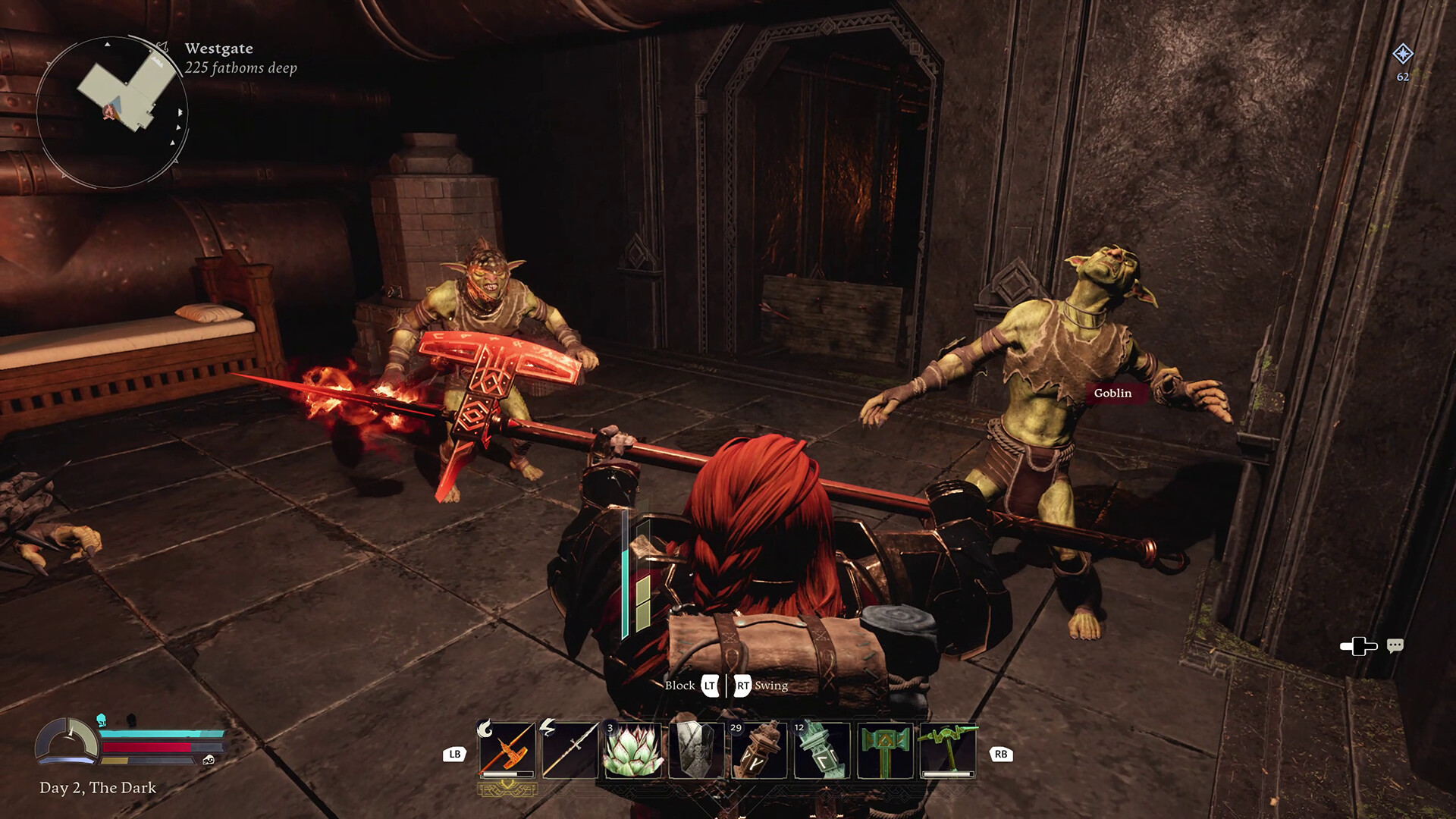Welcome, fellow adventurers of Middle-earth! Today, we’re delving deep into the mines of Moria with our comprehensive review of “The Lord of the Rings: Return to Moria.” This unique survival crafting game invites players to reclaim the legendary Dwarven homeland beneath the Misty Mountains. But does it live up to the epic legacy of Tolkien’s world? Let’s mine the depths of this game and uncover its treasures and pitfalls.
Game Overview
“The Lord of the Rings: Return to Moria” is set in the Fourth Age of Middle-earth, following the events of the iconic trilogy. Developed by Free Range Games and published by North Beach Games, this game offers a blend of survival mechanics, crafting, and exploration, all wrapped in the rich lore of Tolkien’s universe.
Official Website: Return to Moria
Release Date: October 24, 2023 (PC), December 5, 2023 (PS5), August 27, 2024 (Xbox Series X/S)
Platforms: PC (Epic Games Store, Steam), PlayStation 5, Xbox Series X/S
The Dwarven Expedition Begins
As you step into the shoes of a Dwarf summoned by Lord Gimli Lockbearer (voiced by the legendary John Rhys-Davies), you’re tasked with an epic mission: to reclaim and restore the ancient kingdom of Khazad-dûm, better known as Moria. The game immediately immerses you in the atmosphere of Tolkien’s world, with a stirring opening cinematic that sets the stage for your adventure.
Gameplay Mechanics
Survival and Crafting
At its core, “Return to Moria” is a survival crafting game. Players must manage resources, hunger, sleep, temperature, and even noise levels as they explore the treacherous mines. The crafting system is robust, allowing you to create tools, weapons, armor, and structures essential for your survival and progress.
Exploration and Mining
The game shines in its depiction of Moria’s vast, procedurally generated environments. Each playthrough offers a unique layout, encouraging exploration and discovery. Mining is a central mechanic, not just for gathering resources but also for uncovering hidden passages and secrets. However, be warned – the noise of your mining can attract unwanted attention from the depths.
Combat
While not the primary focus, combat plays a significant role in the game. You’ll face off against Orcs, cave trolls, and other creatures lurking in the darkness. The combat system, while functional, has been criticized by some players for feeling clunky and unrefined.
Multiplayer
One of the game’s strengths is its multiplayer component, supporting up to 8 players in cooperative play. Teaming up with friends to explore, build, and battle through Moria adds a new dimension to the experience and often leads to memorable moments.
Visual and Audio Design
Visually, “Return to Moria” captures the essence of Tolkien’s descriptions, bringing the ancient Dwarven halls to life with a mix of grandeur and decay. The lighting system plays a crucial role, with darkness being both your enemy and, at times, your ally. The audio design, featuring Dwarven songs and atmospheric sounds, further enhances the immersive experience.
Lore and Storytelling
For Tolkien enthusiasts, the game offers a treasure trove of lore. The developers have clearly done their homework, incorporating numerous references and details that will delight fans. The story, set in the Fourth Age, provides an interesting exploration of Moria’s fate after the events of the main trilogy.
Expert Opinions
Critics have been divided on “Return to Moria,” with reviews ranging from lukewarm to enthusiastic. Here’s a snapshot of expert opinions:
- CGMagazine (7.5/10): “Return to Moria is a fun experience for fans of survival titles and Lord of the Rings. It takes some of the better systems from the genre and marries them to the lore and setting of Moria, resulting in a world that fans can be excited about.”
- TheSixthAxis (6/10): “Lord of the Rings: Return to Moria has the potential to be a challenging and enjoyable multiplayer experience. The loop of mining, crafting, and exploring is satisfying when overwhelming hordes of goblins aren’t haranguing you. However, there doesn’t seem to be any real optimization for solo players.”
- OpenCritic: The game currently holds a “Weak” rating on OpenCritic, with only 14% of critics recommending it and a Top Critic Average score of 56.
Player Reviews
Player opinions on Steam and Epic Games Store have been more positive than critical reviews, with many praising the game’s atmosphere and cooperative gameplay. Here are some highlights:
- Positive: “As a fan of LOTR and survival crafting games, Return to Moria hits all the right notes for me. The attention to lore and the immersive environment make it a joy to explore.” – Steam user
- Mixed: “The game has great potential and I love the setting, but it feels unpolished in places. Combat needs work, and solo play can be frustrating.” – Epic Games Store user
- Negative: “Disappointing performance issues and repetitive gameplay mar what could have been a great LOTR experience. Needs more work to truly shine.” – Steam user
Our Verdict
After spending considerable time in the depths of Moria, we find “The Lord of the Rings: Return to Moria” to be a game of contrasts. Its strengths lie in its faithful recreation of Tolkien’s world, immersive atmosphere, and enjoyable cooperative gameplay. The procedurally generated environments offer good replayability, and the crafting and exploration mechanics are solid.
However, the game is not without its flaws. The combat system feels underdeveloped, and solo play can be challenging and less enjoyable than multiplayer. Performance issues have been reported by some players, though patches have addressed many of these concerns.
For fans of Tolkien’s work and survival crafting games, “Return to Moria” offers a unique and often engaging experience. The thrill of uncovering ancient Dwarven secrets and rebuilding the legendary halls of Moria can be genuinely exciting. However, players looking for a more polished or combat-focused experience might find the game lacking in some areas.
Pros:
- Rich Tolkien lore and atmosphere
- Engaging cooperative multiplayer
- Procedurally generated environments for replayability
- Solid crafting and exploration mechanics
- John Rhys-Davies reprising his role as Gimli
Cons:
- Clunky combat system
- Less enjoyable solo experience
- Performance issues on some systems
- Can feel repetitive after extended play
Final Score: 7/10
“The Lord of the Rings: Return to Moria” is a labor of love that will resonate most strongly with die-hard Tolkien fans and those who enjoy survival crafting games. While it may not reach the lofty peaks of Erebor in terms of polish and performance, it offers a unique journey into one of Middle-earth’s most iconic locations. Gather your company of Dwarves, sharpen your axes, and prepare for an adventure in the dark depths of Moria – just watch out for the Balrog!
Have you ventured into the mines of Moria yourself? We’d love to hear your thoughts and experiences in the comments below. And remember, in the words of Gimli himself, “Nobody tosses a Dwarf!” – unless it’s into a multiplayer session of “Return to Moria”!

